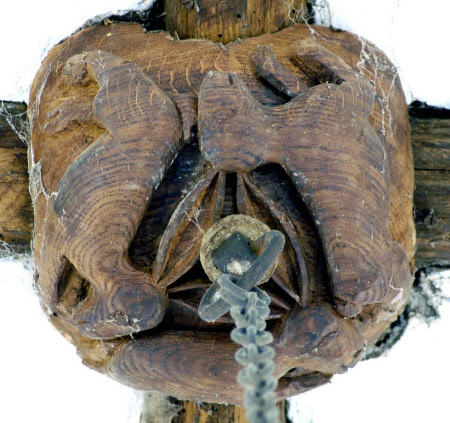Roof boss
Category
Architecture / Features & Decoration
Date
1530
Materials
Wood
Measurements
300 x 300 x 150 mm
Place of origin
England
Order this imageCollection
Cotehele, Cornwall
NT 347661
Caption
This symbol has distant origins. Its occurrences include a cave painting in China from 7th-century AD; and on a statue of Buddah's dhoti in a Himalayan temple. It is thought the symbol might have reached British shores via the Silk Route. It appears in many churches throughout Dartmoor, where it is often seen alongside the ‘Green Man’, as is the case at Cotehele. One theory, with Pagan origins, is that the hare represented female fertility, and the green man, male fertility. A Christian theory is that the tri-form appearance of it represented the Holy Trinity. In the 19th-century it was locally known as the 'tinners rabbits', perhaps unsurprisingly given that Dartmoor was a prolific tin mining area.
Summary
One of eighteen roof bosses, this one carved with a triple hare motif, their ears forming a triangle so each appears to have two although there are only three between them.

